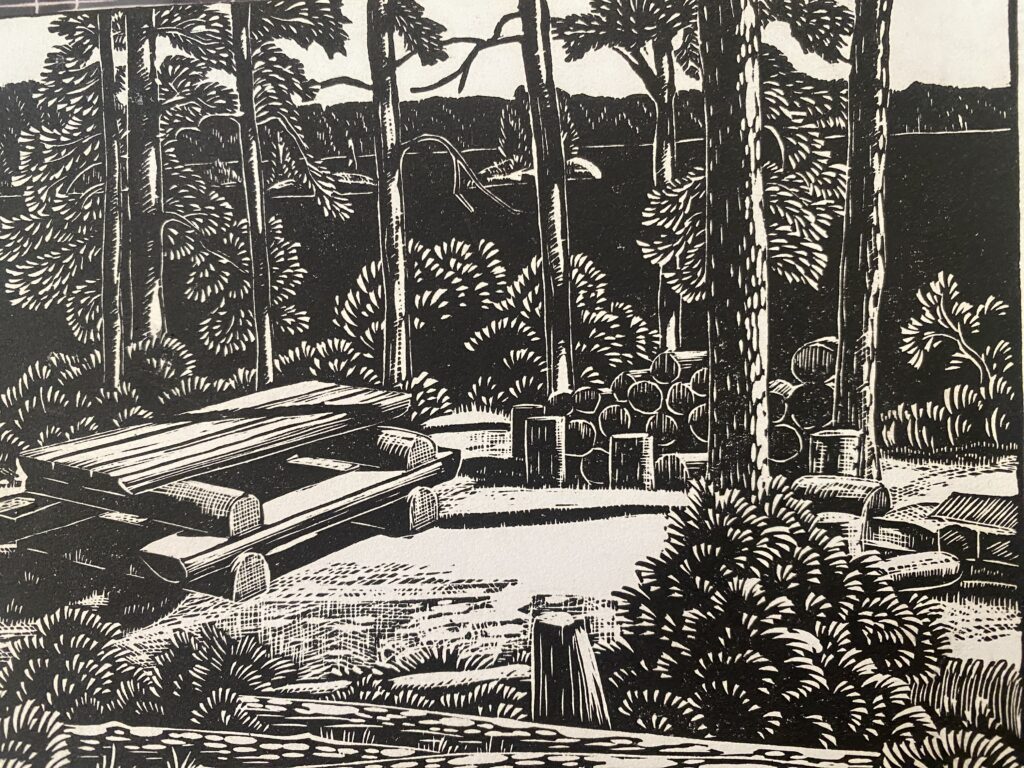12/19/24 – Earlier this winter we received the following customer inquiry and it had some of us a bit stumped…
Found your interesting trip planning info online when I was searching for evidence of old CCC camps. About 40 years ago my husband and I were on a trip from Malberg Lake going east and happened upon an old camp with huge picnic tables. I believe it was right before Dent Lake. Obviously built by the CCC in the 30s. Do you happen to know what I’m talking about? I’d love to figure out which lake that was. Didn’t write it down!

Luckily, our very own Bill Hansen had some insight.
Thanks for your question.
During the CCC era, visionaries like Aldo Leopold and Bob Marshall in the U.S. Forest Service were pushing for wilderness designation of wild areas all across the country, recognizing that a constituency of wilderness recreation enthusiasts would help their cause. A huge amount of CCC effort was dedicated to the BWCA Wilderness, known then as the “Roadless Area.” Ancient canoe routes were mapped and improved with extensive “improvements” to portages and campsites, including portage grading, bridges and canoe rests. As a part of the effort, beautiful and massive log tables were built on campsites, along with log docks at the ends of portages. Signs were installed, not only on portage landings, but along lakeshores to guide travelers along established routes.
The log tables rotted out fairly quickly, so in the 1960s the Forest Service started replacing them with stained tables made from dimension lumber. They concentrated their efforts on the most popular lakes and larger lakes that allowed them to fly in the disassembled tables with their Beaver aircraft. The more remote routes, like the Louse River where you traveled, retained their log tables and docks into the late 1970s and even the early 1980s in some obscure locations. One of the last log tables that I’m aware of (probably the one you saw) was on Zenith Lake which is on the Louse River route east of Dent Lake. It may also have been Frederick Lake or even Mesaba, depending on how long ago you were there.
The treadwork that the CCC did is still plainly visible on many portages–if you really look for it–a testament to an era when people were remarkably skilled with stone and wood. Remnants of the docks are still visible too, especially along the Louse River route, with rusting spikes in preserved logs under water. After the 1964 Wilderness Act made the BWCAW a formal part of the wilderness system, the Forest Service gradually abandoned all the CCC amenities for users’ convenience and emphasized work that protects the resource itself–things like the fire grates, privies and erosion control. The signs, canoe rests and picnic tables are all just memories now. Although some old-timers grumble, I believe this policy is much more in line with the intent of the Wilderness Act, which eloquently says, “A wilderness, in contrast with those areas where man and his works dominate the landscape, is hereby recognized as an area where the earth and its community of life are untrammeled by man, where man himself is a visitor who does not remain.”
I hope this was helpful.
Sincerely,
Bill Hansen
Former owner of Sawbill Canoe Outfitters

